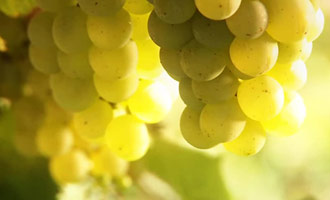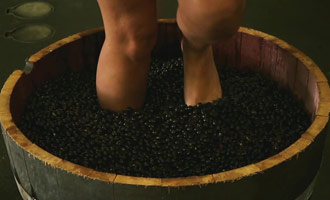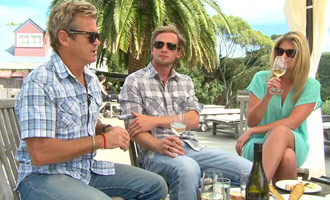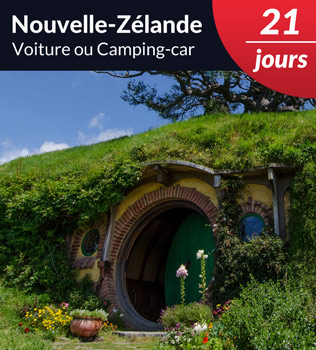
Visit of the Vineyards in New Zealand.
Please contact us and we will help you to organize your trip! It's free and without commitment.
- Read the post
- Details
- Advices
The Practical Guide of the Activity.
- 1Wines Famous All Over the World.
- 2Which Vineyards to Visit in New Zealand?
- 3Which Wines to Taste During Your Stay?
- 4The Best of White Wine: Visiting Saint Clair.
- 5The Best of White Wine: Visiting Rippon Vineyard.
- 6The Ranking of the Best Cellars To Visit.
- 7An Original Visit With Funny French Cars.
- 8The Classic New Zealand Wine Trail.
- 9How to Bring Back Wine From New Zealand?
- 10Bonus: Complete TV-Show on New Zealand Wines.
Wines Famous All Over the World.
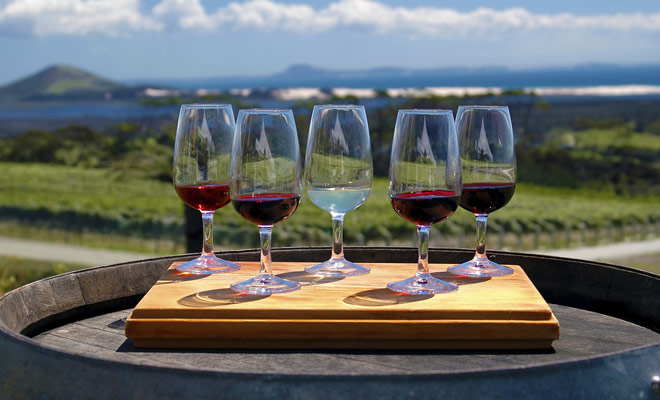
New Zealand wines are among the best in the world.
New Zealand wines have emerged on the international scene and are now recognized among the best in the world. If you enjoy drinking better beverages than just sodas, prepare yourself for the best surprise of your stay.
There is little chance that you had already tasted some wine from New Zealand. The Kiwi country produces only a tiny fraction of the world's wine production. Which means that you'll join the society of lucky people who have tasted the wines from the other side of the earth.
Do not mistake yourself, I do not claim to speak to certified oenologists!
This guide is dedicated to people who love wine tasting and who want to discover the main wine regions of the country, and the best wines to order at the restaurant. A selection of the best twenty wineries in the country and a presentation of the amazing “New Zealand Wine Trail” will give you all the cards in hand to organize an exceptional stay.

Wine tastings are very popular.
And the original experiences are legions... Funny French Cars will drive you from one vineyard to another in an authentic vintage Renault 2 CV! The privileged relations between guides and producers guarantee you an exemplary welcome.
And what incredible landscapes! Saint Clair and Rippon Vineyard (my two favorite producers) have in common to have settled their properties in the heart of magnificent regions producing world-class white Sauvignon Blancs and Pinot noirs.
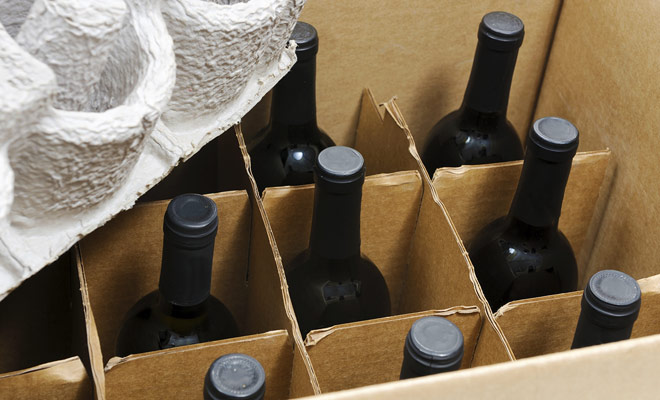
You can bring back some good bottles.
I guess that you naturally want to bring back bottles as souvenirs of your stay. We will review the quantities authorized by the customs and the duty-free opportunities for your last-minute shopping.
By the way, I precise that the list of festivals is covered in a separate guide. However, the Auckland Wine & Food Festival which takes place every year from March to April and the Marlborough Wine Festival in February are two must-do events.
Which Vineyards to Visit in New Zealand?
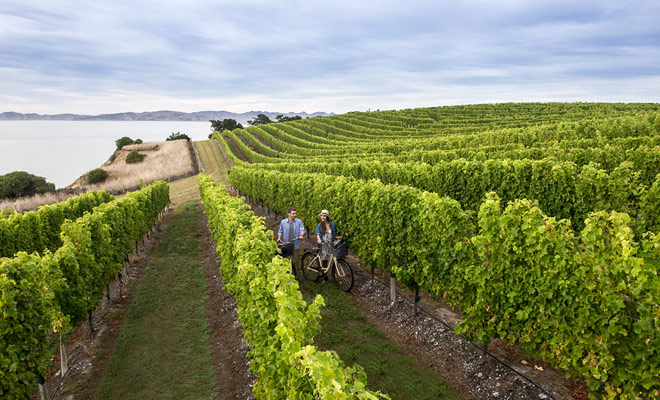
There are about ten wine regions to visit in New Zealand.
Here are the Top 10 wine regions of New Zealand. This is not a ranking as such, and if it was the case, Marlborough, Central Otago and Hawke's Bay would be on the podium.
I present the recommended wines (in order of importance) for each region and the best nearby tourist locations to help you plan your stay.
Marlborough (South Island)
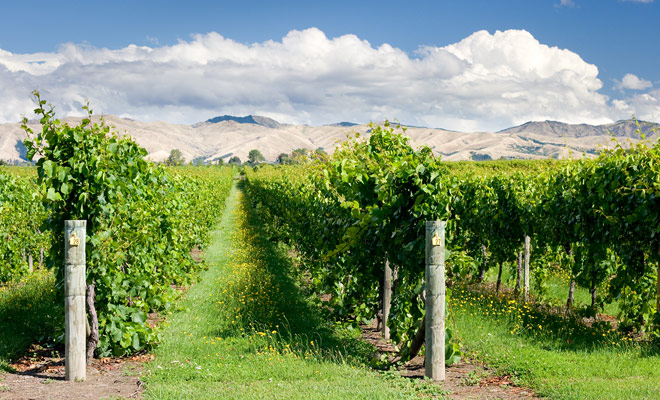
The Marlborough produces the best white Sauvignon Blanc in the world.
At the northern tip of the South Island, the country's largest wine region is located close to the Abel Tasman National Park.
The Marlborough has a dry climate, one of the sunniest in New Zealand, and produces one of the best white Sauvignons in the world.
Recommended Wines
Tourism in the region
Central Otago (South Island)
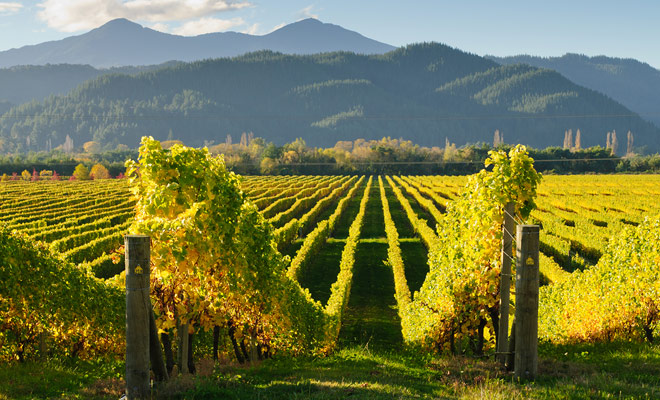
Central Otago is famous for its excellent Pinot Noir.
Turquoise lakes and snow-capped peaks: the vineyards of Otago grow in the heart of New Zealand's most photogenic landscape. Wine tasting and cellars visits are a must-do.
Recommended Wines
Tourism in the region
Hawke's Bay (North Island)
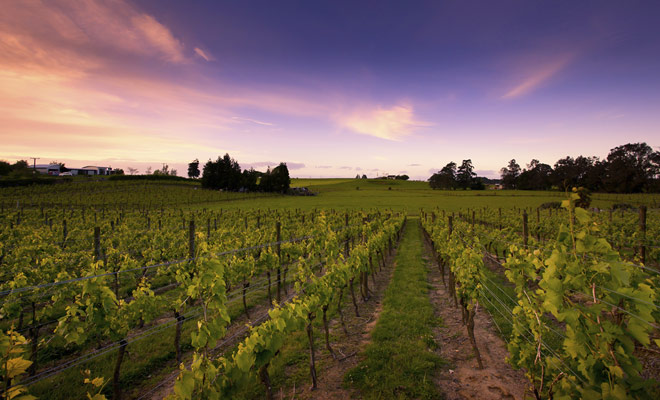
The vineyards of Hawkes Bay can also be visited by bicycle.
The second-largest wine region in the country is on the east coast of the North Island. Vineyards and bicycle paths are the main attractions of this bay where tourism activities are, however, less numerous than anywhere else.
Recommended Wines
Tourism in the region
Waikato (North Island)
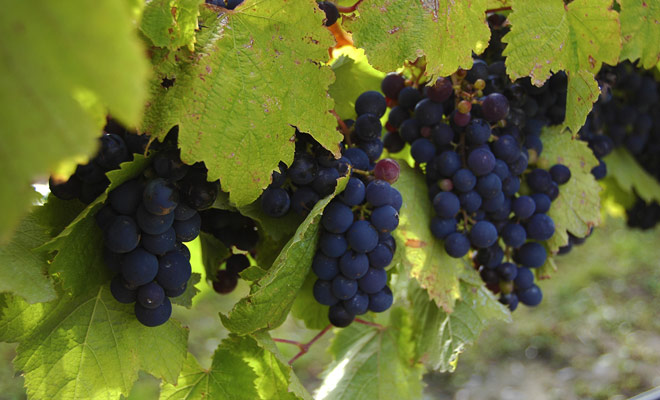
The Waikato has a mild climate and beautiful vineyards.
Located at the south of Auckland, this hilly agricultural region with a mild climate recalls the Shire from the Lord of the Rings (you can even visit the village of Hobbiton). The Waikato remains a small wine-growing region, but its vineyards extend every year.
Recommended Wines
Tourism in the region
Auckland (North Island)
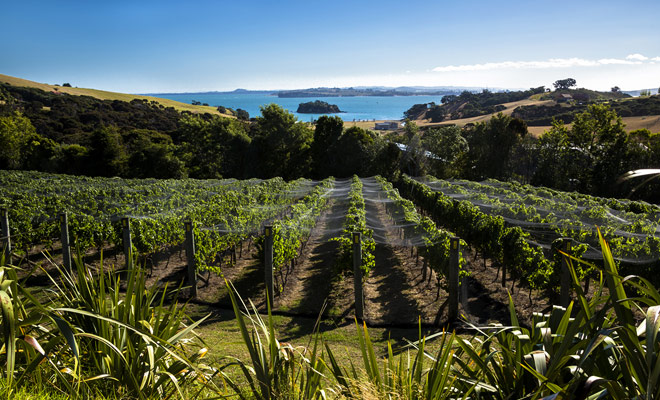
The Auckland region has many quality vineyards.
Auckland is not only the largest city in the country, but it is also the name of an entire region with a hundred vineyards. The shops in Waiheke Island attract a growing number of visitors, although the quality of wines is not the best in the country.
Recommended Wines
Tourism in the region
Gisborne (North Island)
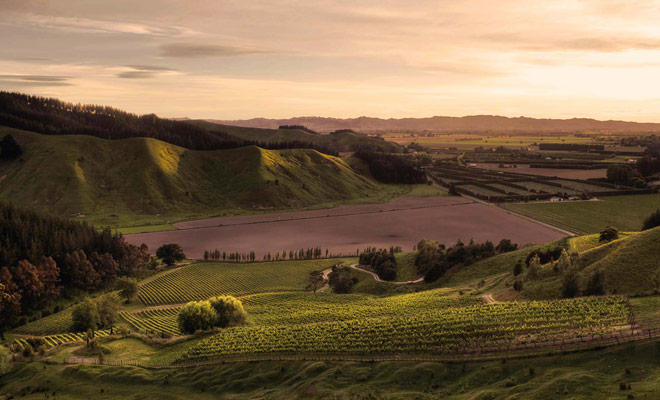
The Gisborne region is far from major tourism zones.
Fourth wine region of New Zealand. Famous for its tasty Chardonnay, Gisborne on the east coast of the North Island is not a very touristy area, although the Te Urewera National Park is worth a visit.
Recommended wines
Tourism in the region
Nelson (South Island)

The vineyards of Nelson are close to the Abel Tasman Park.
Heavenly region of the South Island, Nelson hardly suffers from the comparison with the neighboring Marlborough. If the purpose of your visit is related to the Abel Tasman National Park,you will have the pleasure of savoring exceptional wines after a hiking day.
Recommended wines
Tourism in the region
Canterbury / Waipara Valley (South Island)
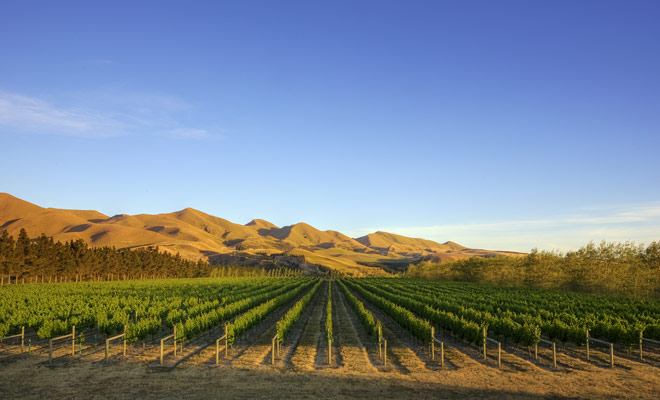
The vineyards give a certain charm to the Canterbury.
The Canterbury is a region on the east coast of the South Island with landscapes sometimes a bit dearie but often spectacular.
The vineyards have been established only for a few decades and the wines obtained begin to impose themselves.
Recommended wines
Tourism in the region
Wairarapa (North Island)
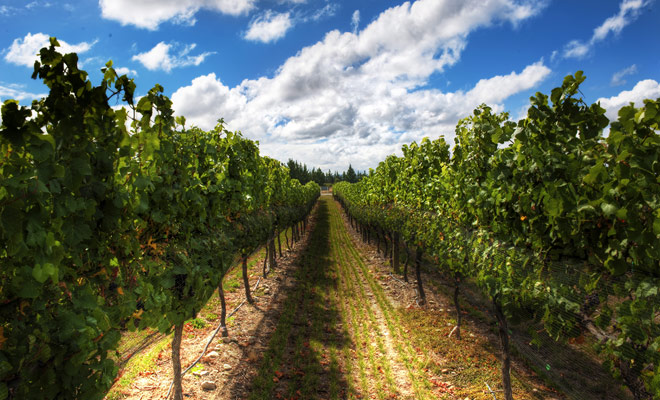
Wairarapa is a small but excellent wine region.
Just one hour's drive from the capital Wellington.. This small region of the North Island has a low production (only 1% of the annual production of the country) but produces exceptional wines.
Recommended wines
Tourism in the region
Northland (North Island)
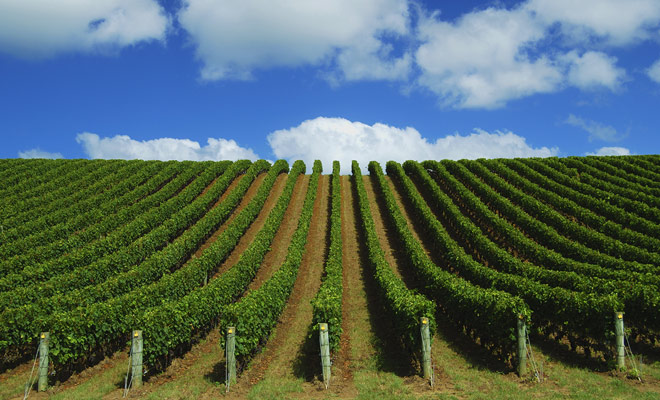
The climate of Northland gives original wines.
Historically the first wine-producing region in New Zealand where missionaries planted the country's first vineyard in 1819. This tourist region has a subtropical climate that gives very original wines, if not excellent.
Recommended wines
Tourism in the region
Which Wines to Taste During Your Stay?
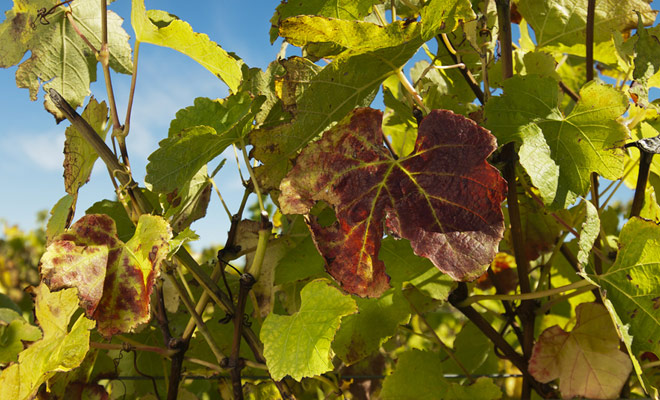
New Zealand has revolutionized its way of producing wine.
The replacement of aging grape varieties with others more suitable to the climate was financed by the State in the 1980s. But it was mostly the spirit of mutual help and the pooling of know-how between producers which proved to be decisive.
It took only thirty years to see a real revolution. British settlers introduced the vine in the 19th century, but the wine produced was disappointing (to say the least) during decades. Several major changes in the production allowed to turn mediocre table wines into authentic masterpieces.
Formerly mocked and known to a few initiates, New Zealand wines are now famous throughout the world. The Sauvignon Blanc (probably the best in the world), and to a lesser extent the Pinot Noir, have imposed themselves even if it is still rare to find them in the rest of the world.

New Zealand know-how is recognized throughout the world.
Here are the eight best grape varieties in New Zealand, the great classics that you can order without hesitation in a restaurant. I will present first the white wines that have mostly contributed to international recognition. We will serve the red wines in a second time.
| WINE | PRODUCTION | EXPORT |
|---|---|---|
| Sauvignon blanc | 63 % | 83 % |
| Chardonnay | 9 % | 2 % |
| Riesling | 1 % | 0.5 % |
| Gewürztraminer | 1 % | 0.5 % |
| Pinot gris | 6 % | 2 % |
| Pinot noir | 9 % | 6 % |
| Merlot & Cabernet Sauvignon | 9 % | 6 % |
| Syrah | 0.6 % | 0.1 % |
I leave aside the sparkling wines (good but far to be exceptional) and spirits which do not arouse a great interest despite some progress over the past ten years.
Sauvignon Blanc (White)

The Sauvignon Blanc is the best wine of New Zealand.
The most awarded wine from New Zealand, recognized as one of the best in the world. A success all the more phenomenal as the first grape varieties date only from 1973. Two thirds of the wines produced in the country are now white Sauvignons, and if there must be only one wine to taste during your stay, this is the one!
Taste & Flavors
Intense and endowed with a vegetable character (sweet pepper, fresh herb) Sauvignon Blanc has a very aromatic taste that evokes green fruits (apple, pear) and even tropical (melon, mango or blackcurrant).
Pairing & Service
Ideally served at 7 ° C, Sauvignon Blanc can be enjoyed as an aperitif. At the table, it accompanies fish, seafood, salads or vegetables as well as dishes made with lemon and tomato.
Chardonnay (White)
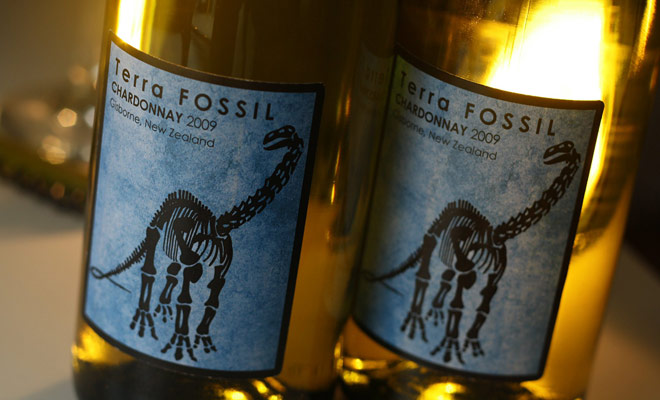
The Chardonnay is improving year by year.
A popular wine in New Zealand, produced in all regions, but which is hardly known outside the country despite its undeniable qualities. The main reason is that the Chardonnay's popularity is in decline in the whole world since about fifteen years. The best vintages are bottled at Villa Maria in the Auckland region.
Taste & Flavors
New Zealand Chardonnay varies greatly from one region to another. A tasting reveals citrus aromas (lemon, tropical fruits) and some other unexpected(vanilla, caramel or coconut).
Pairing & Service
Ideally served at 7 ° C, Chardonnay makes wonder with fish or white meat. You will find it on the menu of most Italian restaurants, because it is marvelous with a plate of fresh pasta.
Riesling (White)
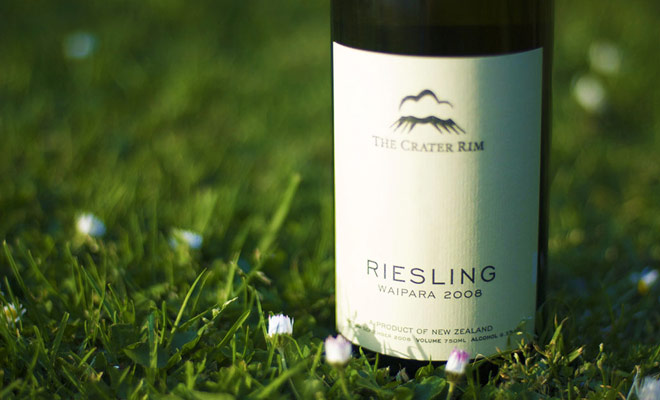
The Riesling is more and more appreciated.
A wine produced almost exclusively on the South Island where the climate and the dry autumns are favorable. The enthusiasm for this wine is confirmed since a few years, and the production regularly increases.
Taste & Flavors
Elegant, very aromatic, but somewhat acidic, Riesling has an aroma that varies greatly from one region to another. Spicy notes in the Nelson region, lemony in the Marlborough, or fruity in Otago, the Riesling will surprise you.
Pairing & Service
Ideally served at 7 ° C, Riesling is the wine par excellence of Asian restaurants, where it pairs well with fish, white meats and pork.
Gewürztraminer (White)

Give the Gewürztraminer a chance during your stay.
Native from Alsace in France, this variety does not manage to impose itself among the great wines. Without necessarily going so far as to bring a bottle of it back to your country (keep in mind, however, that this wine is almost impossible to find abroad), you would be well inspired to taste the Gewürztraminer in restaurant: it could be the revelation of your stay.
Taste & Flavors
Very fruity and therefore very aromatic, the Gewürztraminer is a voluptuous wine with a touch of acidity. One love it or hate it, but it leaves no one indifferent.
Pairing & Service
Ideally served at 7 °C, the Gewürztraminer is primarily served to accompany the cheese, but you can combine it with Asian cuisine, pork or grilled sausages with a barbecue.
Pinot Gris (White)
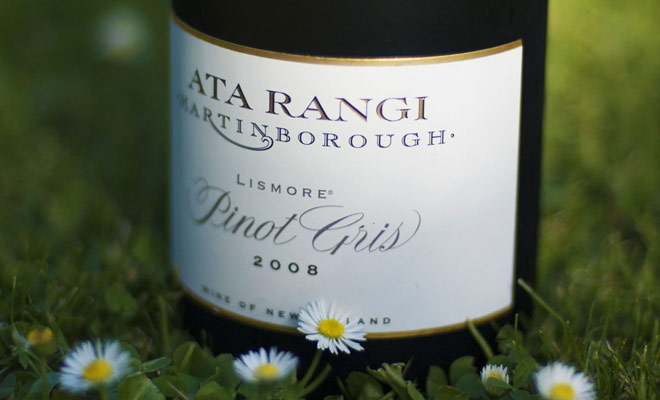
Pinot gris is now the third most consumed wine in the country.
A wine with a special origin, because it owes its existence to a mutation operated from a Pinot Noir. Demanding, the grape has found grace in the exceptional microclimate of the Otago. Popular since the 90s, this is now the third most consumed wine in the country.
Taste & Flavors
Fruity, Pinot Gris includes aromas of peach, apple, honeysuckle, dried fruits, apricots as well as a spicy note.
Pairing & Service
Ideally served at 7° C. Its character fruity, and somewhat acidic, is appropriate only for dishes based on pork or white meats accompanied by pasta. The audacious may also try to associate it with seafood...
Pinot Noir (Red)
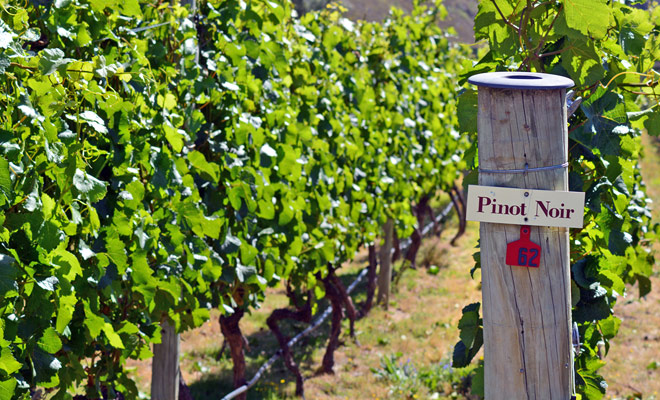
The Pinor Noir is the best red wine from New Zealand.
The only on being able to compete with its French counterpart, the Pinot Noir of New Zealand is the second most consumed wine in the country. It benefits from a wide variety of soils and climates to flourish in five different regions. This is simply the best red wine of the country.
Taste & Flavors
Slightly acidic and a bit spicy, Pinot Noir is an intense red wine.
Pairing & Service
Ideally served at 14 ° C, Pinot Noir accompanies a wide range of red meats (veal, lamb, duck ...) but it is also wonderful with pork, turkey and more surprisingly with the filet of salmon.
Merlot & Cabernet Sauvignon (Reds)
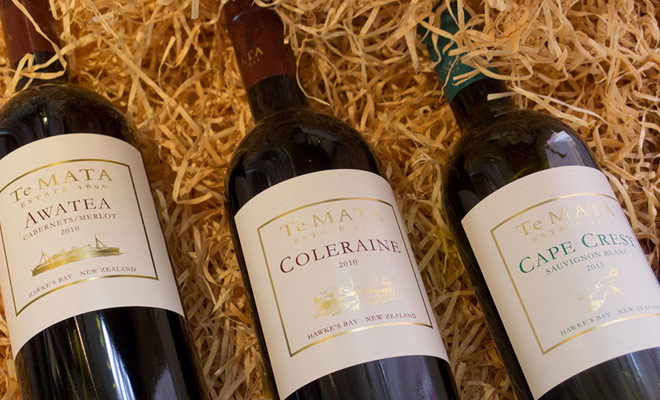
Merlot and Cabernet Sauvignon are good red wines.
Two wines sufficiently similar to be presented together. Their character “all-purpose” (a compliment in a way) explains their success with a production that competes with Pinot Noir although quartered on the North Island.
Taste & Flavors
Very fruity when they are young, more complex with age, it is the cellar wine per excellence.
Pairing & Service
Ideally served at 17 ° C, Merlot and Cabernet Sauvignon do not tolerate any extravagance and are confined (but with perfection) to dishes of red meat and strong cheeses.
Syrah (Red)
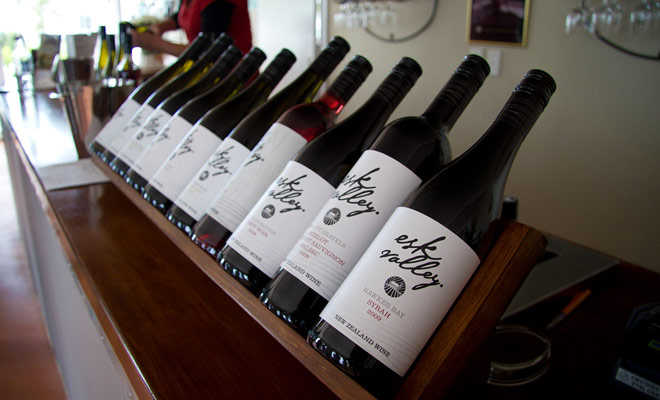
Syrah is beginning to be popular in New Zealand.
One of the first grape varieties planted in New Zealand at the beginning of the 17th century. Syrah is a wine whose consumption increases every year. Its production is still limited, but it would be regrettable not to give it a chance.
Taste & Flavors
A vivid and original aroma that evokes plums with a touch of black pepper and violet.
Pairing & Service
Ideally served at 15 ° C, the Syrah is the traditional wine served in most New Zealand barbecues. It fits perfectly with grilled sausages, beef or duck. But you can also order this wine in Italian restaurants where it is delicious with tomato pizzas.
The Best of White Wine: Visiting Saint Clair.
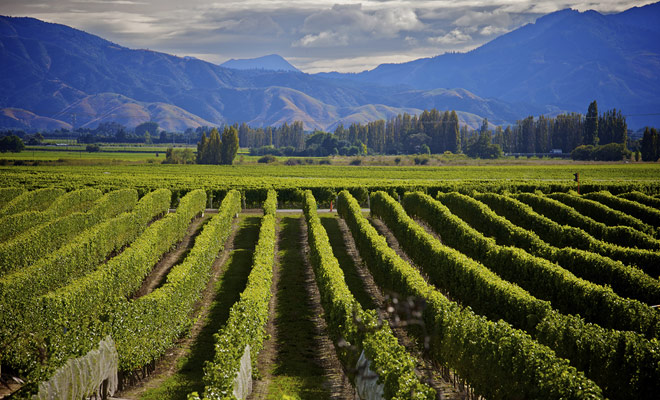
The Saint Clair vineyard in the heart of the Marlborough.
In New Zealand, Sauvignon Blanc is king and Saint Clair is not only the most famous producer in New Zealand, but also a respected brand on the international scene. The vineyard is ranked 29th in the TOP 100 of the World Associate Wine and Spirit.
Saint Clair's award-winning wines are countless, with trophies at the 2005 International Wine and Spirit Competition and the prestigious London International Wine Challenge of 2008. An insolent success, rewarding not only Sauvignon Blanc but also Pinot Noir . More recently, Saint Clair was again voted best wine producer in New Zealand in 2010 and 2011.
Maliciously affixed to each bottle, the little halo evokes "The saint". The property is not much older than the classic TV series and the first vintages go back to 1994.
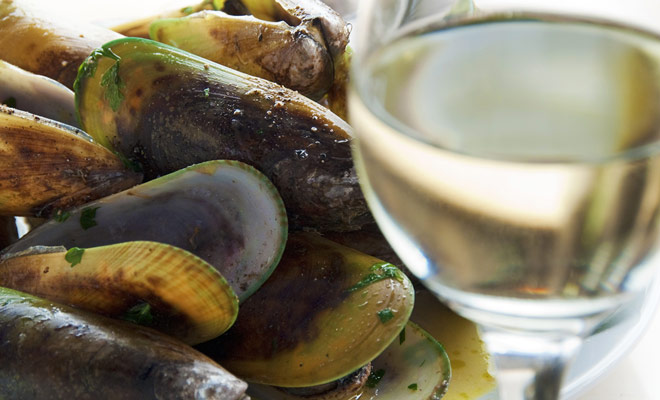
The Sauvignon Blanc of Saint Clair is incomparable.
Dazzling success for a young producer whose vines grow in the splendid Marlborough region of the South Island. The spectacular setting attracts wine enthusiasts like the participants of the annual 21 km marathon held in the vineyards and whose recipes are donated to the fight against cancer.
With such a reputation, one could fear prohibitive rates...
Of course, Saint Clair sells only high-quality wines, but the prices are reasonable and you can consider bringing back some bottles as a souvenir of your stay in New Zealand.
Here is the list of the best vintages, with prices per bottle and per box of twelve. Prices that are regularly updated on the website of Saint Clair.
| WINE | GRAPE | YEAR | BOTTLE | BOX (12) |
|---|---|---|---|---|
| Wairau Reserve | Sauvignon blanc | 2013 | $42 | $212 |
| Omaka Reserve | Chardonnay | 2013 | $36,90 | $442,80 |
| Godfrey's Creek | Noble Riesling Reserve | 2013 | $27,90 | $334,80 |
| Godfrey's Creek | Reserve Pinot gris | 2013 | $29,90 | $358,80 |
| Godfrey's Creek | Reserve Gewurztraminer | 2009 | $29,90 | $358,80 |
| Omaka Reserve | Pinot noir | 2012 | $43 | $516 |
| Rapaura Reserve | Merlot | 2012 | $33,90 | $406,80 |
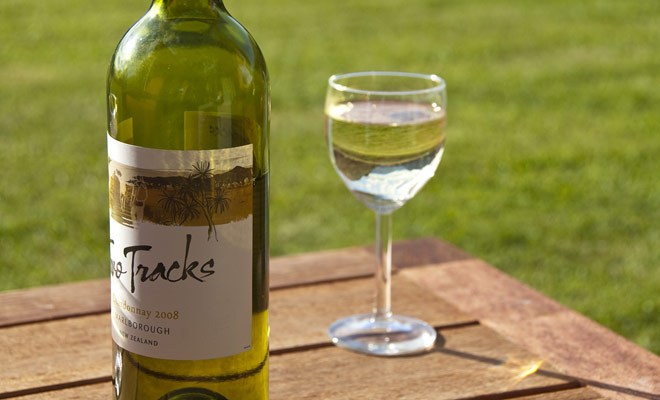
Saint Clair is not the only producer of Sauvignon in the region.
You will, of course, find cheaper wines, but even if you plan to bring back bottles as a souvenir, make sure to choose a wine which is at least of medium-quality. Nothing forces you to buy with your eyes closed, and I recommend you to participate in a tasting first.
Reopened after work, the Saint Clair Cellar Door offers wine tastings.
I suggest to have lunch on site, the menu having been specially designed to be in harmony with the wines of the producer.
The Best of White Wine: Visiting Rippon Vineyard.

The Rippon vineyard in front of Lake Wanaka.
Best red wine from New Zealand, the Pinot Noir is produced in many regions. Competition between producers crowns a different winner every year. Yet, when it's time to choose, I think spontaneously to Rippon Vineyard.
Set on the hillside of the Lake Wanaka, which are surrounded by mountains carved during the Ice Age, Rippon Vineyard has made the fortune of Nick Mills, his happy owner since the 70s. Yet the presence of vineyards at an altitude of 400 m and orientated at 45 ° South is a miracle!
The secret of Rippon Vineyard lies in the microclimate of Central Otago, perfectly adapted to viticulture. The wines obtained are intense, rich in aromas and of exemplary stability. A success all the more remarkable that the production is done without fertilizers nor pesticides!
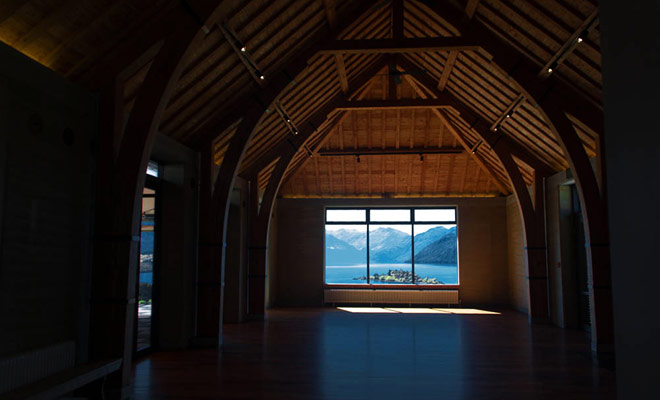
Rippon Vineyard's reception room is majestic.
Like Saint Clair, Rippon Vineyard also organizes events in the heart of its vineyard.
The annual February festival welcomes artists from all over the world. The rest of the year, you can taste the wines of Rippon served with plates of cheeses while enjoying the view on the lake Wanaka.
Ordering a glass of Pinot Noir and drinking it in front of such a heavenly landscape is a unique and unforgettable experience.
If the irresistible desire to buy a few bottles takes you by surprise, do not forget to visit the cellar where you can enjoy a free tasting.
The Ranking of the Best Cellars To Visit.

Visit wine cellars to taste great wines.
Rippon Vineyard and Saint Clair are not the only producers to offer exceptional wines. To make everyone happy, I have prepared a list of the twenty best cellars to visit during your stay.
All these famous wine producers offer tastings, often for free or for a few dollars. It is not uncommon to find a restaurant open on site to welcome travelers. I confess a weakness for Sauvignon Blanc, but if the following list mostly contains Marlborough properties, this is only justice because these are the best in the country.
| REGION | ISLAND | PROPERTY |
|---|---|---|
| Marlborough | South Island | Herzog |
| Marlborough | South Island | Highfield Estate |
| Marlborough | South Island | Hunter's Wines |
| Marlborough | South Island | Saint Clair |
| Marlborough | Ile du Sud | Cloudy Bay Vineyards |
| Marlborough | South Island | Rock Ferry |
| Nelson | South Island | Neudorf Vineyard |
| Canterbury | South Island | Pegasus Bay |
| Canterbury | South Island | Waipara Springs Winery |
| Central Otago | South Island | Rippon Vineyard |
| Central Otago | South Island | Mount Maude Vineyard |
| Hawke's Bay | North Island | Craggy Range Winery |
| Hawke's Bay | North Island | Mission Estate Winery |
| Hawke's Bay | North Island | Te Mata Estate |
| Auckland | North Island | Villa Maria Winery |
| Auckland | North Island | Artisan Wines |
| Auckland | North Island | Babich Wines |
| Gisborne | North Island | Bushmere Estate |
| Gisborne | North Island | Kirkpatrick Estate Winery |
| Gisborne | North Island | Millton Vineyard |
An Original Visit With Funny French Cars.
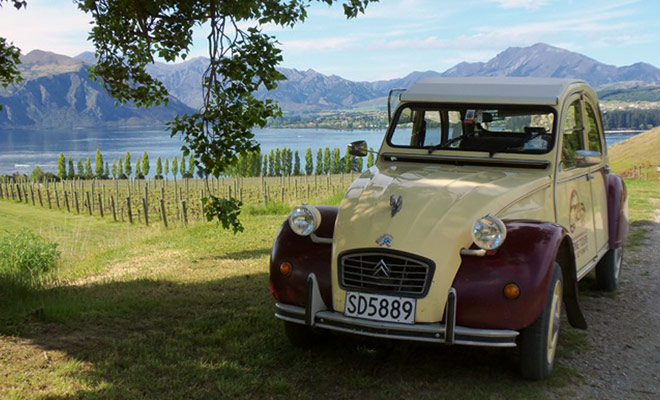
Funny French Cars take you to the discovery of properties.
It is not the guided tours of wine cellars that are missing in New Zealand. The three largest wine regions of the country (Hawke Bay, Marborough and Otago) have made a specialty of such activity. I leave it to our friend Ben the task to list the guided tours in his section at the end of the present article.
I would like to share with you my latest favorite: the vineyard tour organized by Funny French Car.
At the origin of this original concept, we find Julie and Deane who took pleasure in touring the vineyards of Otago in a Citroën 2 CV and now propose to serve as a guide aboard their old vintage French car.
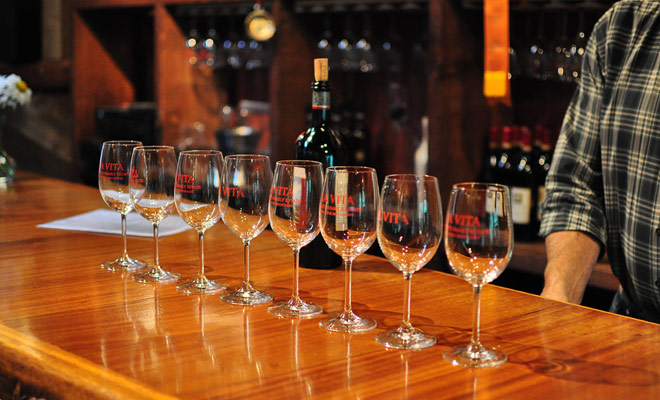
Tasting of the best wines of the central Otago.
The landscapes are magnificent and you will learn more about the history of the country in the space of a day or half a day than during the rest of your stay.
You can choose between a tour of the cellars of three hours and another one of six hours which turns out to be a real gourmet stroll.
According to the program (available in detail on the official website), the visit of the wine cellars will include a stopover at the Tarras Village (the paradise of merino sheep wool sweaters), passing by the old-gold mines of Bendigo, and a visit to a famous ice cream shop with homemade perfumes.
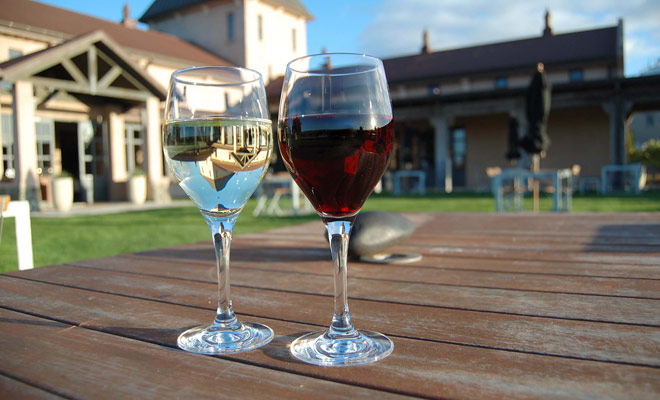
An outdoor tasting during the summer months.
If you decide to embark on a trip in a vintage car to discover the great wines of the region, I reassure you immediately: the guide who will serve as your driver as well will remain sober.
You will only have to let yourself be guided and enjoy the scenery, unless you want to try to drive (but you'll have to seek permission, there is no guarantee you'll be allowed...).
The Classic New Zealand Wine Trail.
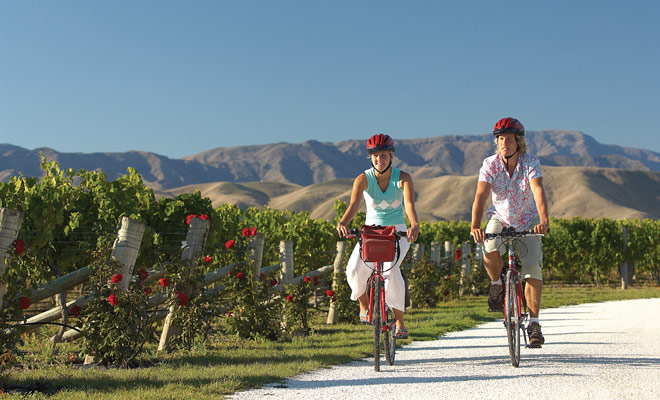
Take a tour of the vineyards and wine cellars.
The Classic Wine Trail is a circuit that crosses Hawkes Bay, through Wairarapa and up to Wellington. The ferry then connects travelers to the Marlborough and the best vineyards in the country. Each wine region crossed offers countless opportunities to taste wines in exceptional settings.
There is little chance that the entire route (120 cellars to visit in total, that's just impossible) interests you if you discover New Zealand for the first time. On the other hand, it is quite easy to include a few stages of the “Classic Wine Trail” in your schedule.
It is worth remembering that we are talking about tasting here. Even if you enjoy drinking a glass of wine for real from time to time, the spittoon will be mandatory, especially since you will be driving between cellars (and on the left side of the road...).

The tasting of New Zealand wines among friends.
Some people are embarrassed to taste a wine in the presence of the landlord without buying him a few bottles out of politeness. But the principle of tastings does not involve any compulsory purchase and you will be served a simple glass bottom. There is an infinity of combinations, but for enthusiasts who wish to follow the “Classic Wine Trail”, I recommend a six-day itinerary.
Brochures and Maps
Brochure on the Classic Wine Trail.The itinerary in the Marlborough.
The itinerary in Hawkes Bay.
The itinerary in the Wairapapa.
Recommended Itinerary
-
Day 1 - Hawke's Bay
Visit Napier’s New Zealand Wine Center and explore the local vineyards by bicycle. -
Day 2 - From Hawke's Bay to Wairarapa through Tararua District
Follow the SH2 and keep an eye on sign posts to find the wine cellars on your way. -
Day 3 - Wairarapa
Collect a map at the i-SITE of Wairarapa and visit the wine cellars. -
Day 4 - From Wairarapa to Wellington
Visit a capital that has more bars per capita than the city of New York. -
Day 5 - From Wellington to the Marlborough
Take the ferry to the South Island and the Blenheim vineyards. -
Day 6 – Marlborough
Book a guided tour, or visit some of the 38 wineries in the area all by yourself.
How to Bring Back Wine From New Zealand?

The airport duty shop is your last chance.
Rather than buying an expensive “authentique” Maori souvenir made in China, you can bring back some good bottles instead. New Zealand wines are hard to find in the rest if the world, so do not miss your chance!
One finds bottles imported at Marks & Spencer, for example, but I let you imagine the real value of a 7 euros wine that has covered 20,000 km by boat! These are medium or low-quality wines, calibrated for the daily lunches and we are far from the quality of a Sauvignon Blanc de Saint Clair or a Pinot Noir from Rippon Vineyard.
The most practical solution is to have your bottles shipped directly from New Zealand, but you'll pay nearly $390 of shipping costs for a simple box of twelve bottles!
If your means are more restricted, all you can do is to pack bottles and bring them back in your luggage.
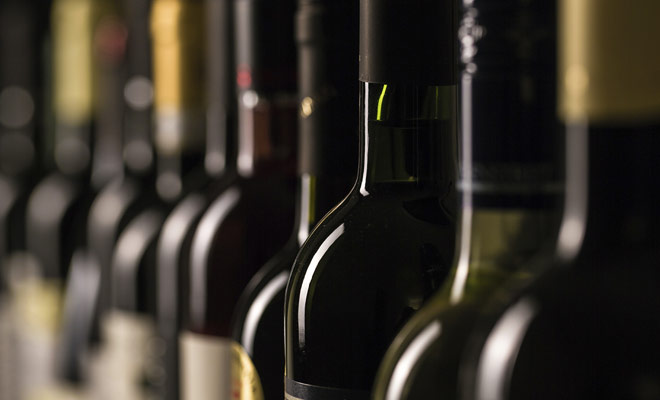
Be careful not to exceed the authorized quantities.
Producers often provide appropriate protective packaging and bubble wrap for a few euros. But be careful not to exceed the maximum weight of baggage tolerated by your airline (about 30 kg on Singapore Airlines). And do not forget that bottles are not allowed in the cabin!
It depends of your country, but each traveler is usually allowed to bring two bottles in his luggage, bringing to four the number of bottles for a couple on vacation (double-check this point!).
The duty-free shop at the airport is an emergency solution, but be careful to keep the packaging sealed (especially if you plan to visit a city during a stopover) and always state your final destination to the merchant.
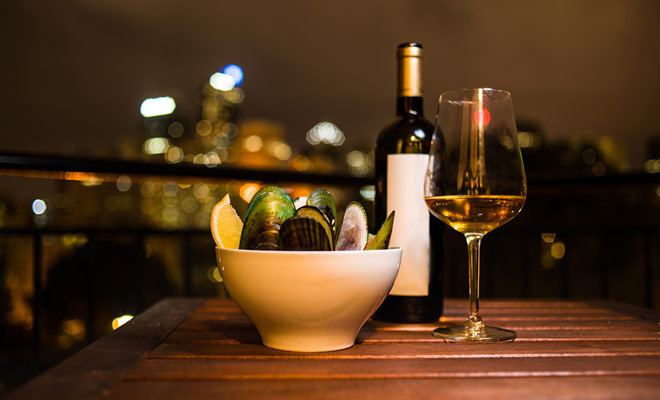
It is better to bring back a bottle than a souvenir made in China.
To leave New Zealand without having tasted a Sauvignon Blanc or a Pinot Noir, seems to me as improbable as to cross the country without seeing sheep. and if you still do not thirst after reading this article, you just dislike wine or I failed in my mission! I give the mike to our friend Ben for the traditional question-and-answer part where you'll get practical advice. And if you discover an exceptional wine during your trip, do not forget to let us know!
To prolong the discovery of the wines of New Zealand, Kiwipal suggests you watch a superb TV report on the subject.
Bonus: Complete TV-Show on New Zealand Wines.


Questions & Answers.

What can I do for you? Most of your questions are about customs and the goods allowed, but I would be happy to share some tips about the best wines to bring back ...
- All topics ... 12 answers in total
- Bringing Wine From New Zealand 4 answers
- Wine Tour 4 answers
- Purchase Wine in New Zealand 2 answers
- Wine Tasting 2 answers
Bringing Wine From New Zealand
- How much alcohol can I buy at the duty free?
Beyond two bottles per person, you can be taxed up to 80% of the price of each bottle.
- Which wines can be purchased at duty-free from the airport?
Check out the official sites of the three largest airports in the country.Auckland duty-freeWellington duty-freeChristchurch duty-free
- What if I exceed the number of allowed wine bottles?
The surplus will be seized if you do not pay the fine.
- Should we buy duty-free wine bottles?
These are known brands and you will not be scammed. It's up to you to see if you prefer to bring back a souvenir bought in the winery of a vineyard after talking with the winegrower, or on the neon shelf of an airport duty-free shop. The wine will have the same taste in both cases, but the experience will not be the same.
Wine Tour
- What is the best guided tour of the Marlborough?
In my opinion, the best outings are organized by Marlborough Wine Tour (from Blenheim or Picton). You can choose between three routes (3h, 4h and 6h) for a rate between $55 and $92. It's a la carte, and you can ask to visit this or that property and spend more time in one than another. Count one vineyard tours per hour.Marlborough Wine Tours
- What guided tours to choose in the Marlborough?
I recommend the following organizers:Marlborough TravelSounds ConnectionExplore MarlboroughBrancott EstateBubbly Grape Wine ToursHighlight Wine Tours
- Which guided tours to choose in Hawke's Bay?
I recommend the following organizers:Prinsy's ExperiencesOn Yer Bike Winery ToursOdyssey New ZealandNew Zealand Wine CentreTakaro TrailsCycle TurismoBike About Tours LtdBike D'vine Winery & Sightseeing ToursChurch Road WineryMission Estate WineryPernel FruitworldSileni EstatesThe Silky Oak Chocolate FactorySkyline Aviation
- Which guided tours to choose in Wairarapa?
I recommend the following organizers:March Hare CyclingGreen Jersey CyclingMartinborough Wine ToursFlat Earth BoutiqueZest Food ToursTranzit Tours Martinborough Gourmet Wine Tour
Purchase Wine in New Zealand
- How much does a good bottle of New Zealand wine costs?
Count about $75 for a good vintage, but it is possible to be happy for a dozen euros.
- Can we buy wine from New Zealand in Europe?
A few bottles are sometimes found at Supermarkets, but they are rare. It is at Mark & Spencer that you will have the easiest way to find white Sauvignons and Pinot Noir. The quality is not amazing (or low), but you can let yourself be tempted.
Wine Tasting
- How to taste wines without visiting the cellars?
I recommend the fantastic Winery of Queenstown. The setting is fantastic and you can test over 80 New Zealand wines with cheese platters. This is my favorite.Queenstown wine tasting
- How to know which dish to cook according to a particular wine?
In New Zealand, there is a website dedicated to cooking and wine.New Zealand Cuisine guide

